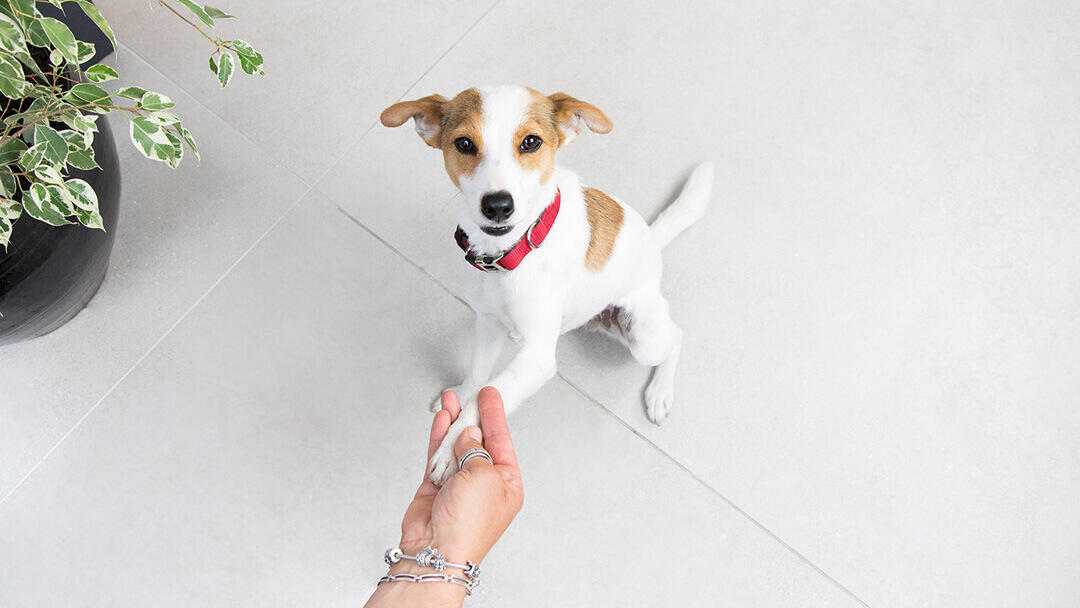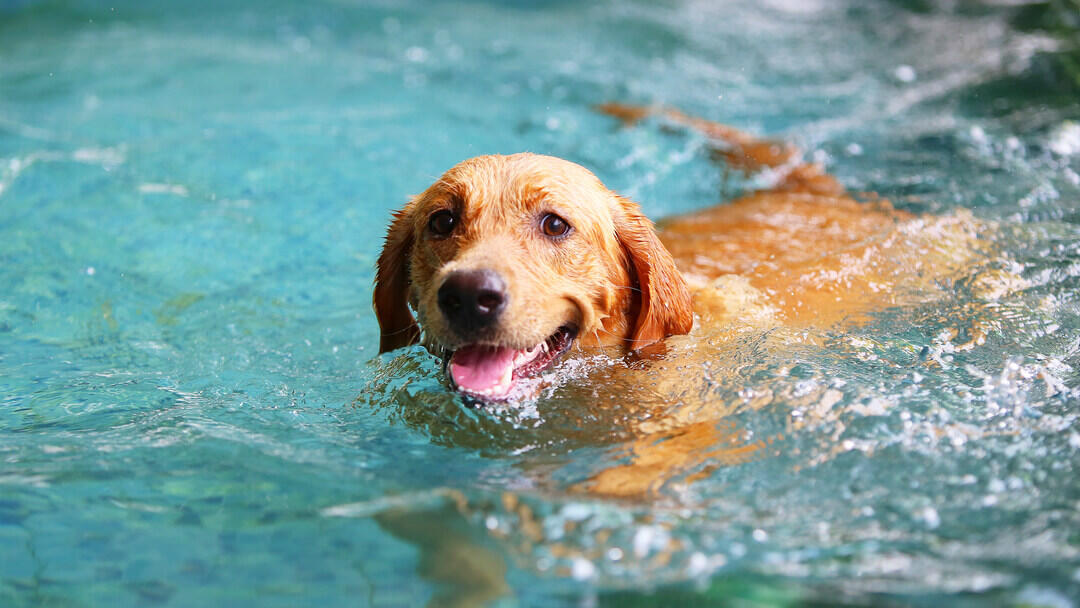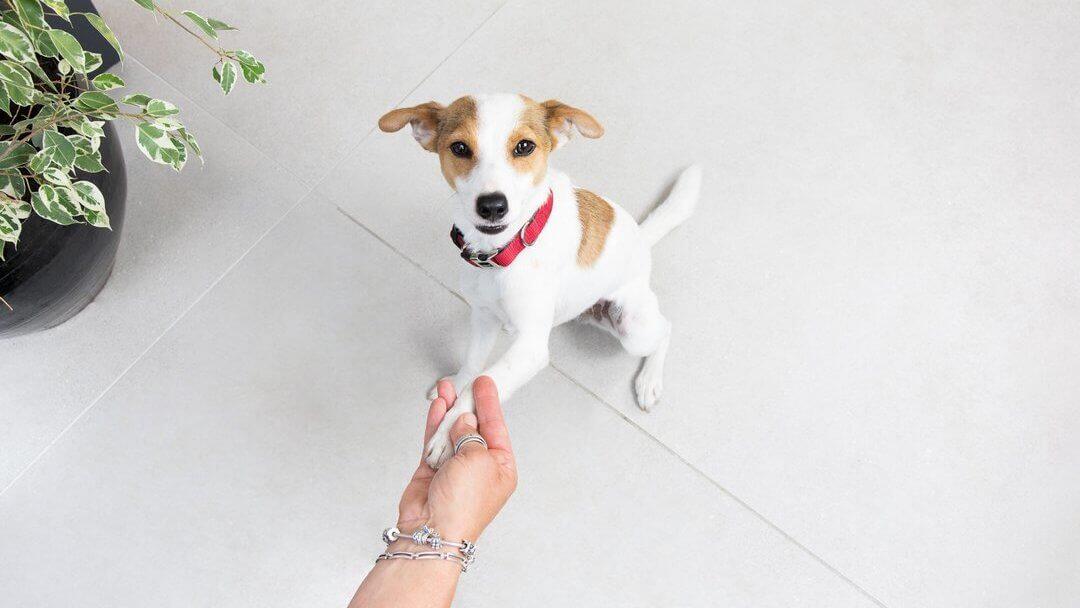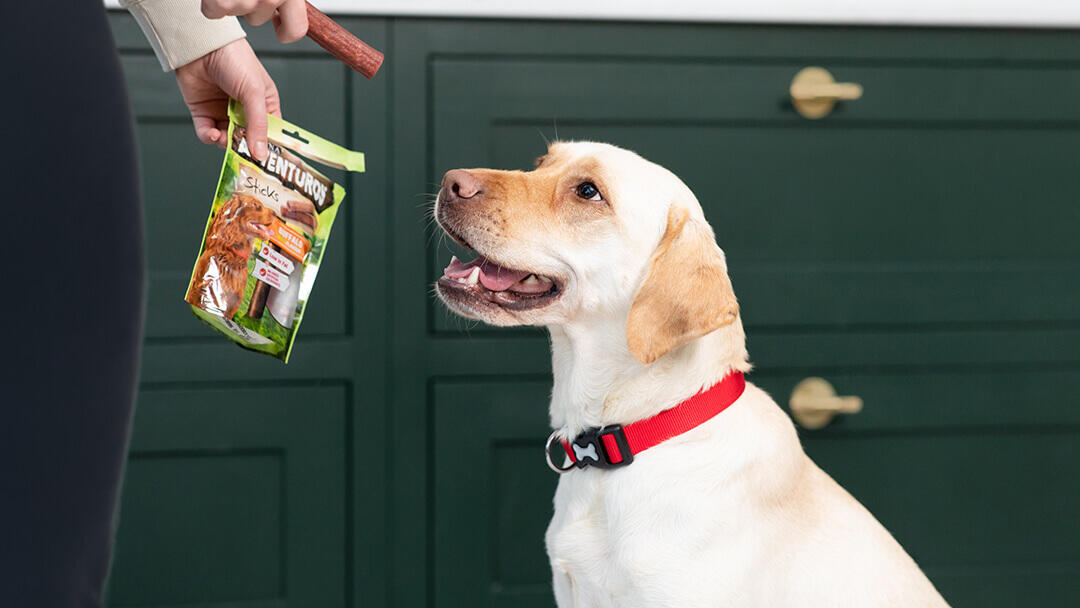
Teaching your dog new behaviours and tricks is a good way to keep them active and mentally stimulated, as well as a great bonding opportunity for the two of you. If your dog has already mastered ‘sit’ and ‘down’, you can teach them how to roll over.
Regardless of whether they’re pups or adult dogs, rolling over or at least lying on their side is a fun and easy trick for them to learn and can be extra helpful in certain situations like vet examinations. Not to mention the cuteness of it all! So, are you ready to learn how to teach a dog to roll over? Check out these easy and straightforward steps that you can follow to teach your little (or big) goofball some rolling skills!
When can you start teaching your dog tricks?
Teaching your furry friend tricks can begin in your early weeks together (once your puppy has settled into their new home), but as a general rule, the younger the dog, the easier it will be to teach them new behaviours and tricks – although older dogs who have a life history of learning new skills, can often master new ones far quicker.
If you’ve taken on an older rescue dog who hasn’t had any training at all, it will take longer and require more patience – but you’ll be surprised how much they can still learn with time and lots of rewards.
The benefits of training your dog
All training – whether is its basic life skills, general obedience-type exercises or tricks – help deepen the bond between you and your dog as you work together, get to know each other, and learn to communicate with each other.
It also provides your dog with mental enrichment as training exercises get them to use their brains, problem-solve and give them something enjoyable to do with you as part of their day.
And of course, the more control you have of your dog (which develops through training), the safer you can keep them, as well as ensuring they are safe around others.
What you need
Training your dog to roll over doesn’t require any equipment. All you need is:
- A quiet space that’s free of any distractions such as other people, dogs or noise.
- A soft floor – such as carpet or a thick rug. Grass on soft ground can well too if you have a very quiet garden.
- Delicious treats. These should be small and soft so that they can be eaten easily - and the smellier and tastier the better!
- Patience.
How to teach a dog to roll over
While there are lots of steps to teaching the rollover, it is a fairly easy exercise, as long as you take it a bit at a time. Some dogs find this difficult to do – either because they are too inhibited to roll over, they are too bony for it not to be painful, or they are not fit enough, If you think your dog is struggling with this, put this trick to one side for a bit and address the reasons before revisiting it later.
- Make sure they know ‘down’ or ‘lie down’ on cue first because this is the starting point for this trick. It is even better if you have trained the ‘play dead’ trick’ first – as you are already half-way there and have already discovered how to start this off in the best way for you and your dog.
- Ask your dog to lie down a few times, rewarding them when they do. Watch to see if they naturally slide their hips to one side or the other when they lie down, as if they do, it will give you a good clue to what direction they are going to prefer to roll to.
- From the down position, show them the treat, get them interested in it by holding it by their nose, and then use the treat to bring their nose round towards the hip they are not lying on (the uppermost one) – keeping it close to their body. To follow the treat, they will have to roll over onto one hip. When they do that, give them the treat. That is the very first step mastered, as they have already shifted their weight – which will allow them to roll further onto their side.
If they lie down perfectly straight, you’ll have to do a bit of experimentation to see when side they are happiest to roll to. Hold the treat by their nose and lure their nose round towards their tail until they slide over onto one hip (then reward). Try first one side then the other and see which one seems the easiest for your dog. - Practise this until your dog will tip onto one hip as soon as you lure their nose round towards their hip. Now you are ready for the next step.
- Continue the movement of the treat over the dog’s back – however once you get halfway and the dog’s body gets halfway round the roll, change the movement slightly to straighten the dog’s neck a bit but continue the rolling movement. That sounds complicated when you read it but makes perfect sense when you do it!
- Reward your dog once they roll over. When they finish doing a full roll, use your marker word (“good” or whatever you have chosen) and give them the treat.
- Practise. Now you have both got the idea, you need to practise. Once you’ve done it a few times, your hand movement/luring will get far better – and your dog will start to understand exactly what you want. Always reward a successful rollover. While you do need to practise, this is an exercise that needs strong core muscles so only ever do a few at a time as it can be physically tiring for your dog.
- Reduce the lure. Once your dog is happily rolling over following the treat, you can move onto just using the same hand signal but without a treat in your hand – but then reward them after they have done the roll. Practise this – and as long as your dog is doing this with no problems, start to reduce the hand signal until it is a very small gesture.
- You can leave the roll over trick on just a hand signal cue – or if you want to add a verbal cue too, you can begin to add this first as your dog is rolling over, so you link the behaviour with the word, and then later as the cue for the behaviour.
- Always reward the roll over when your dog has completed it.
- Only teach this trick in short sessions – as it’s quite physically demanding.
Tips when teaching your dog tricks
Don’t try to speed up the process by rushing
Teaching a dog how to roll overtakes time and practice – for both you and your dog - and so you shouldn’t expect to achieve results quickly. Remember that patience and consistency is key and if you find yourself getting impatient, it’s time to take a break and try again another time.
Be enthusiastic and have fun
Dogs respond to our emotions, behaviours, and voice – and if you are having fun, they will be having fun.
Make sure you are training this exercise in the right place
Especially for slim or bony dogs, rolling over can hurt their spine or their hips so make sure you are training on a soft surface. Also do not train this around other dogs. Rolling over can make a dog feel vulnerable and they might not feel comfortable doing it in front of other canines.
If your dog ready for this exercise?
This is quite a physically demanding exercise – so if your dog is very young, very old, or unfit, it’s one to avoid.
Now that you’ve learned how to teach a dog to roll over, it’s time to enjoy showing off your furry friend’s new skill and pat yourself on the back for a job well done! Remember that teaching your dog tricks should be a fun experience, so take it slowly and enjoy the process.
Do you need more fun ideas to improve your quality time together? Here are 5 other cool tricks you can teach your dog.













